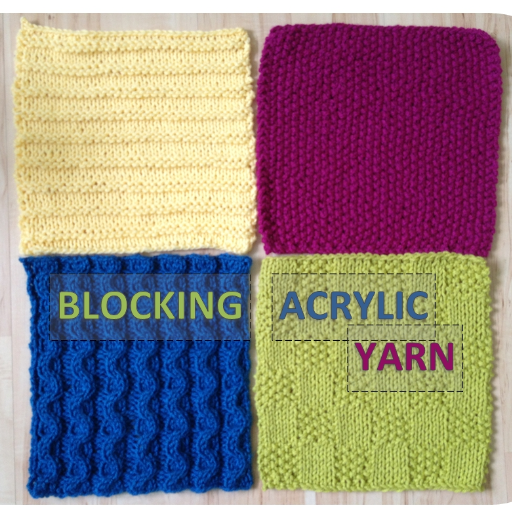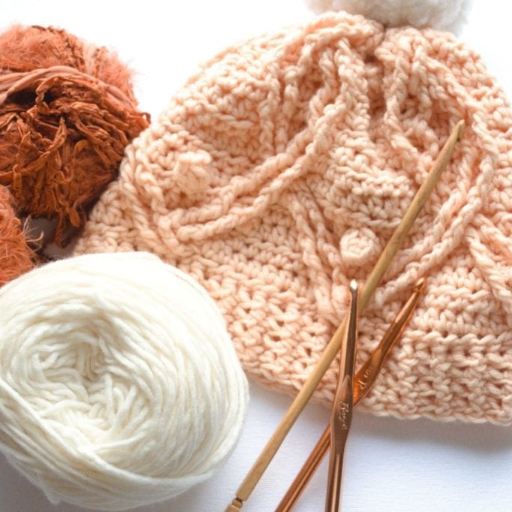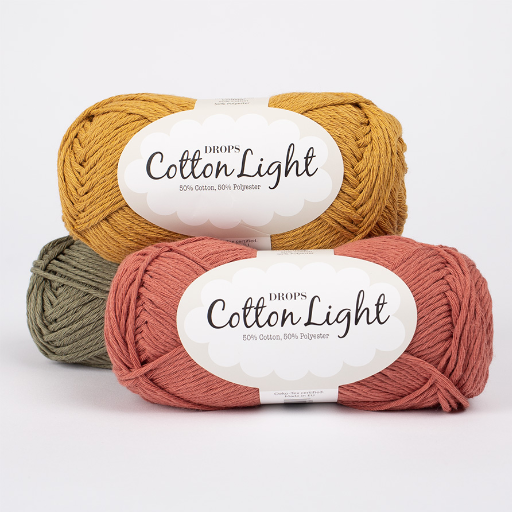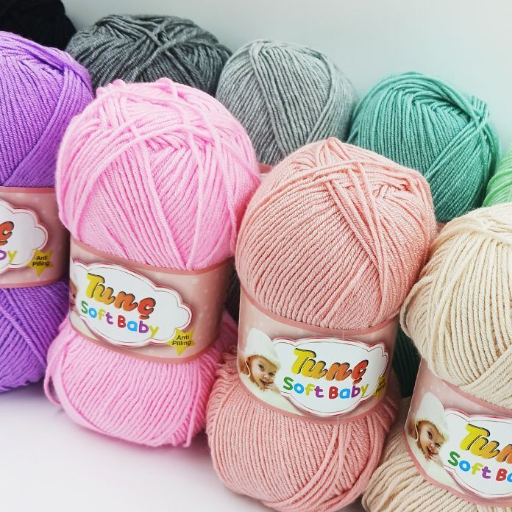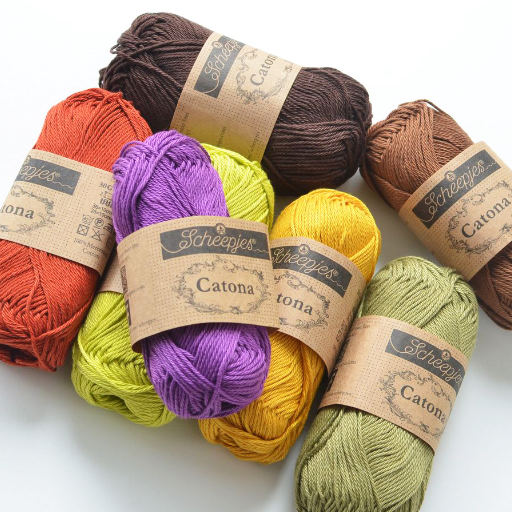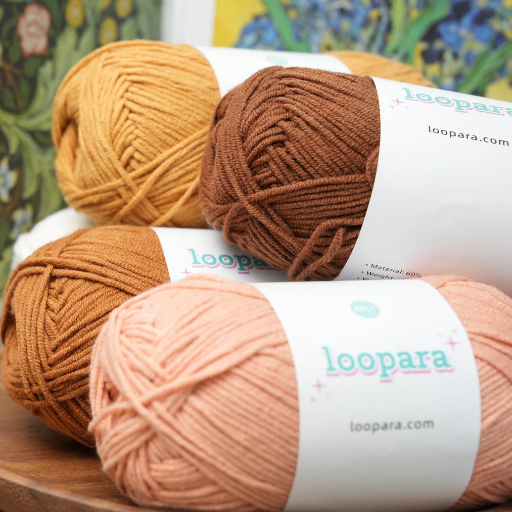In crochet, the type of yarn may dictate the final product. Acrylic and cotton are two of the more popular varieties, each with peculiar characteristics, advantages, and applicable areas. But how do these fibers really square off, and which one do you need for your next project? This article will delineate the most important differences between acrylic and cotton yarns, such as texture, durability, cost, and washing requirements. Whatever you choose to build, wear, work, or décor-must know the distinctions of these materials to back up your choice and give your work an edge in class.
Understanding Yarn Types
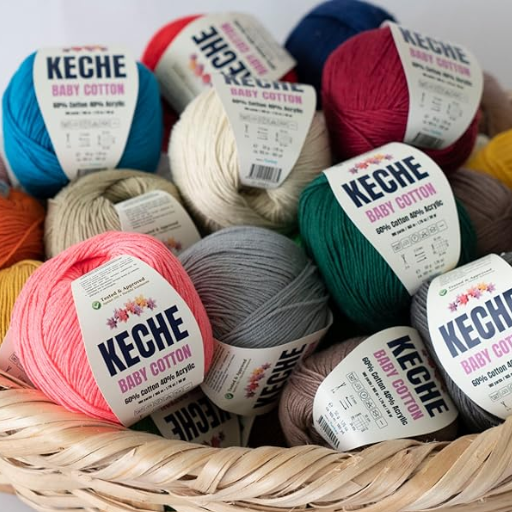
Depending on where you are, there are many types of acrylic yarn. They can all be said to be different acrylic yarns made of synthetic fibers. They are one of the least-cost fibers available on the market, mostly easy to source, with plenty of brightness, which enhances their desirability in bold colors of any project. Acrylic-based yarns could be pretty great when it comes to its care: Machine-washable, fully resistant to fading, and they dry extremely fast. On the one hand, the unpleasant thing about it is that it is not very breathable compared to natural fibers, and in most cases, it pills, and the effects devastate the yarn. Acrylic yarn makes good beginner yarns, seasonal decoration items, or items that demand a lot of washing, i.e., blankets or children’s clothes.
Cotton yarn is a natural fiber famous for its durability and breathability. It gets wet easily and thus is very good for making summer garments, dishcloths, and some kind of eco-friendly household items. It has a smooth surface, and being able to hold its shape, sharpens stitch definition in intricate patterns. It can be heavier than acrylic, and it can also shrink if not carefully washed. Cotton yarns work well with those projects that are sustainable in nature and produce items that demand a sturdy feel from the natural side.
What is Acrylic Yarn?
Acrylic yarn is a synthetic fiber made from polymers and petrochemical materials (polyacrylonitrile being one of them). Acrylic yarn is very durable and cheap, making it very popular in the crafting industries, a category under which fall knitting, crochet, and weaving. It emulates many of the good qualities of natural fiber, such as warmth and softness, but at times at a much cheaper price. Since it is lightweight, moth-proof, and also retains its shape and color very well when washed, it finds more serious consideration when it comes to making items bearing very high utility, such as blankets, sweaters, and scarves.
Among its numerous benefits is versatility; acrylic yarns are produced in almost all sorts of textures and interlial thicknesses, from superfine and smooth to thick and lustrous. This gives ample opportunity to be exploited in many artistic uses. Thanks to advances in production, some kinds of acrylic mimic the feel of wool quite well while being entirely hypoallergenic. Moreover, acrylic yarn has excellent dyeability, making these yarns available in bright and highly contrasting colors. However, the yarns lack breathability, as do any other synthetic yarns, and will pill with time, though one may care a lot to minimize the effects. Their water-resistance and mildew-proof qualities make them great choices for long-lasting projects that require less maintenance.
What is Cotton Yarn?
Cotton yarn is a natural fiber spun from the fluffy bolls of the cotton plant. It is smooth, soft, breathable, and versatile. Generally categorized as a plant-based cellulose fiber, cotton yarn has great moisture absorption qualities, which makes it perfect for use in projects needing summer wear, dishcloths, and baby items requiring lightweight breathable qualities. It translates cotton yarn into several types, among which the mercerized cotton is chemically treated to increase its strength, luster, and ability to absorb dye. This yarn is biodegradable and hypoallergenic, adored chiefly due to its environmentally friendly nature and very minor impact on the environment when compared to synthetic alternatives. However, once stretched, this fiber is generally not elastic enough to return to its original shape. Cotton is a sturdy fiber that can stand regular washing and drying, and is one of the first favorites in textile projects for beginners and experts alike.
Key Differences Between Acrylic and Cotton Yarn
|
Parameter |
Acrylic Yarn |
Cotton Yarn |
|---|---|---|
|
Material Origin |
Synthetic, petroleum-based fiber |
Natural, plant-based fiber |
|
Texture |
Soft but slightly plastic-like |
Soft, smooth, natural feel |
|
Durability |
High resilience, less prone to wear |
Strong but may weaken with use |
|
Elasticity |
Highly elastic, retains shape well |
Low elasticity, prone to stretching |
|
Moisture Absorption |
Low, water-resistant |
High, absorbs moisture effectively |
|
Weight |
Lightweight |
Heavier than acrylic |
|
Warmth |
Provides excellent heat insulation |
Less insulating, cool feel |
|
Cost |
Generally affordable and budget-friendly |
Often more expensive |
|
Environmental Impact |
Non-biodegradable, not eco-friendly |
Biodegradable, eco-friendly |
|
Maintenance |
Machine washable, dries quickly |
Machine washable, longer drying time |
|
Dye Retention |
Bright, less prone to fading |
Excellent absorption, may fade |
|
Best Use Cases |
Cold weather items, beginners |
Summer wear, eco-conscious projects |
Pros and Cons of Acrylic Yarn
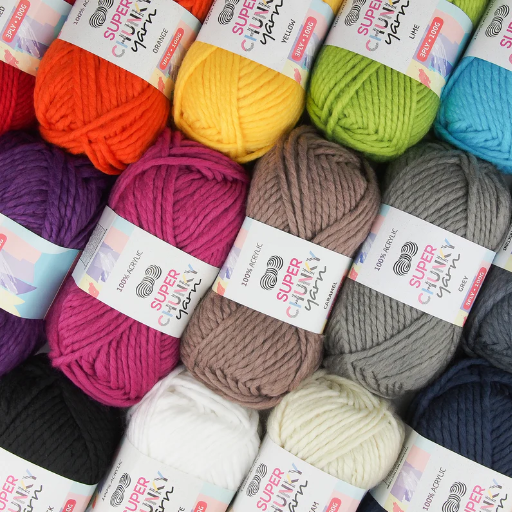
Pros
- Affordable: An inexpensive yarn option that suits many projects.
- Durable: Yet resistant to wear and tear, an acrylic yarn with its stretch helps retain shape and color for a considerable time.
- Easy to Care For: Easy-care acrylic yarn cleans well in a washing machine.
- Wide Variety: A rich galore of color, textural, and weighting options is available to suit many uses.
Cons
- Non-Biodegradable: Being synthetic, acrylic yarn disintegrates over time rather than decomposing; this contributes to environmental concerns.
- Less Breathable: Acrylic fibers are not breathable as are the natural ones and it may be uncomfortable in hot weather.
- Can Pill Over Time: With use or on continuous washing, acrylic yarn builds up pills, which eventually cause an improper look of the finished product.
Advantages of Acrylic Yarn
- Affordable Cost
The availability of cheaper options than some natural fibers like wool or silk has made acrylic yarn a good option for the hobbyist or for mass production. Its relative affordability ensures its accessibility without having to forgo functionality or color options.
- Durability
Stretched to its limit, acrylic yarns come up with very cheap, earned bargains of endurance, resistance, and in every forming that state in wear and tear. It ferries well through heavy handling and much washing and is therefore an ideal choice for items that see constant use: blankets, sweaters, and baby dresses, just to name a few.
- Wide Range of Colors
From practically any shade of the rainbow, acrylic dyes offer fashion to the consumer so that they may realize their style and creative expression. Moreover, colorfastness enables the hues to maintain their brilliant appearance through many washes.
- Lightweight
Apart from being strong, acrylic yarns are light, creating a pleasant sensation against skin and forming an easy material to work with. This is especially useful when carrying out crafts on large projects such as afghans or garments.
- Moisture-Resistant
Acrylic yarns denounce the absorption of moisture like other natural fibers, thus minimizing the promoting of mold and mildew. This feature perfectly fits hardcore outdoor use, or wet-land climate.
Disadvantages of Acrylic Yarn
- Environmental Impact
Acrylic yarn is a petroleum-derived synthetic fiber from a nonrenewable resource. The process for making acrylic yarn involves consumption of high energy and releases a huge amount of greenhouse gases. Aside from this, a synthetic fiber like acrylic releases microplastics into the aqueous environment with each wash, thereby causing environmental pollution. In fact, research shows that synthetic fibers—which include acrylic—constitute a significant percentage of microplastic pollution of oceans, affecting marine ecosystems.
- Heat Sensitivity
The synthetic type, acrylic yarn, is heat sensitive. Any high heat setting: iron, dryer, whatever- will melt or at least wreak havoc upon the fibers. So far, less versatile than natural fibers such as wool, which can usually stand at least some level of heat required in cleaning or in maintenance.
- Lack of Breathability
Things that keep the heat and moisture near your skin can sometimes prove a little uncomfortable; for example, acrylic yarns cause that in their garments, particularly in warmer climates or if one is doing any type of vigorous activity. Such does not happen with the natural fiber of cotton or wool.
- Static Build-Up and Pilling
Static build-up is another issue with acrylic yarns, making them clingy and uncomfortable for wear. In addition, the fibers tent to pill with use and abrasion, forming small, unsightly balls on the surface of garments. This sometimes shortens the lifespan of an acrylic project and reduces the appeal of a finished project.
- Lower Insulating Properties Compared to Natural Fibers
Pros and Cons of Cotton Yarn
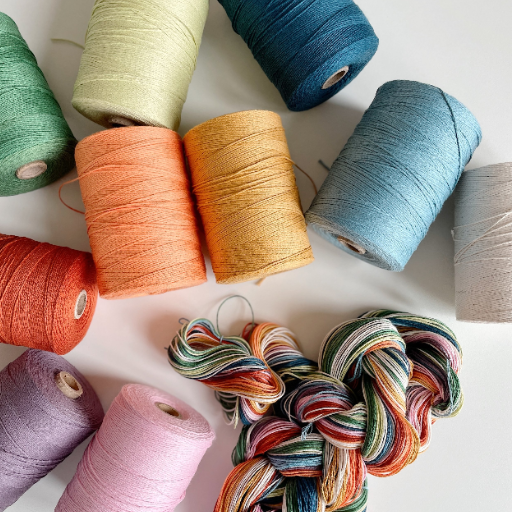
Pros
- Breathability and Comfort: Cotton yarn tends to be very breathable and soft, being preferable for light clothing reminiscent of comfort suitable for warm weather.
- Durability: It gives way to repeated use and is strong enough to last longer on the finished projects.
- Hypoallergenic: Cotton, being a natural fiber, rarely causes allergy making it ideal for allergic types of skins.
- Versatility: Because it takes dye well and retains color after washing, it can be used for practically anything: clothing to home decorating.
Cons
- Lack of Elasticity: Cotton yarns have little stretch. This can become a nuisance when faced with a project requiring flexibility and resilience, weighing against such usage.
- Tendency to Shrink: Unless properly treated, cotton when being washed will shrink and this could alter the size as well as the fit of the finished stuff.
- Moisture Retention: Being absorbent, cotton retains moisture for a long period of time, thereby causing discomfort in wet situations.
- Prone to Wrinkling: Cotton fibers can be more prone to wrinkling than their synthetic counterparts, therefore exerting a bad influence on the looks of the finished product.
Advantages of Cotton Yarn
- Breathability: Cotton yarn produces an extremely breathable fiber; therefore, it has been considered ideal for pieces constructed for warm climates in design. The fibers, therefore, facilitate air movement fairly well, hence helping to keep heat down and make it all the more cool for the wearer.
- Durability: When woven and cared for well, cotton yarn has considerable tensile strength capable of withstanding repeated use and washing. Reports have shown that cotton fibers can bear load 20% more compared to their synthetic counterparts before breakage.
- Hypoallergenic Properties: Being silver-gray in coloration provides dust and vagility that makes cotton yarn free of toxins for persons known to have sensitive skin or allergic reactions. It is used in manufacturing baby clothes, bedding, and medical textiles to reduce irritation risk.
- Biodegradability and Sustainability: This provides cotton with a tremendous advantage. Cotton, being biodegradable and renewable, if perfectly grown organically, goes on to decompose naturally over time as compared to any synthetic fiber coming from petrochemicals, and in that process, lessens the burden on nature.
- Affordability: Since cotton yarn is generally available within reach and cheap, prices offer an economical choice for the various advertised sector,s ranging from home textile to mass market apparel production.
Disadvantages of Cotton Yarn
- Lack of Elasticity: Cotton yarn has restricted elasticity that hardly permits it to be used in cases requiring a high degree of stretch or recovery properties. Compared to synthetic fibers such as spandex or nylon, cotton yarn does not retain its shape and sags fairly soon in fitted garments.
- Pest Susceptibility: Cotton plants are highly susceptible to pests, such as bollworms, requiring vast amounts of pesticides to be used in the cultivation. Organic farming methods reduce pesticide use to a certain extent, but it is estimated that conventional cotton agriculture accounts for around 16 percent of global pesticide demand, which is a cause for environmental and ecological concern.
- Environmental Impact of Conventional Farming: Despite being biodegradable, the cultivation of conventional cotton has enormous environmental impact. Cotton farming is one of the top water consumers, with almost 10,000 liters irrigation water being used to produce one kilogram of cotton. Chemicals used in non-organic farming systems serve to degrade the soil and pollute water sources.
- Strength Deterioration When Wet: Unlike synthetic fibers, cotton yarn weakens whilst subjected to soaking for long extended periods. Under normal circumstances, it has a standard tensile strength, but the cycle of repeated wet-dry eventually kills the fiber strength gradually, cutting short the lifespan of cotton yarn made products.
- Heavy Weight: Cotton yarn weighs more than quite a few synthetic alternatives, which at times might prove to be an obstacle for applications with major concern on weight. While polyester yarn, being commonly light, is in great stead for travel or sports items where every bit of weight counts.
Comparing Performance: Acrylic vs Cotton Yarn
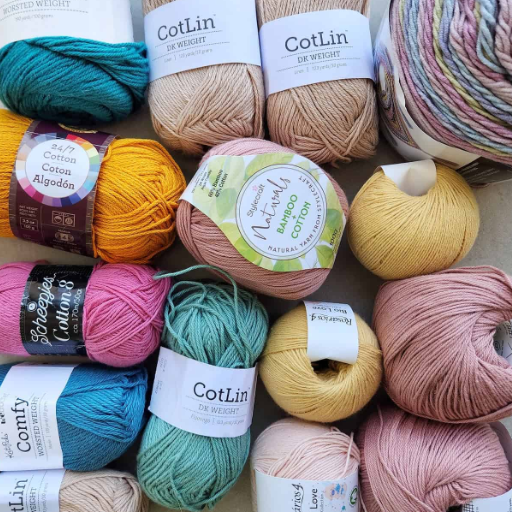
With the consideration of durability, moisture resistance, and comfort, an outline of the foreground performance of acrylic yarn versus cotton yarn might look like this:
- Durability: Acrylic yarn looks long and short against any other yarn—it will thus outperform cotton in making long-lasting products. Cotton yarn will, however, become weaker over time if subjected to moisture and weather conditions, thereby being less durable.
- Moisture Resistance: Acrylic is hydrophobic, meaning water-drops in profusion. It dries in a blink, hence suitable for outdoor or damp scenarios. On the other hand, cotton feels quite responsible, absorbing loads of water and holding on to it for quite a long time.
- Comfort and Feel: Cotton yarn is valued for its softness, breathability, and natural feel- usually preferred in garments that lie close to the skin. Acrylic can give some versatility but at times can feel less breathable and lack the natural texture of cotton.
Each material is chosen depending on the intended use, with acrylic excelling in durability and an array of potential uses, whereas cotton offers much better comfort and a more natural look.
Comfort and Feel Against the Skin
A yarn’s touch influences a lot the end-user experience, especially for garments in direct contact with the skin. Cotton yarn, as a natural fiber, is outstanding in softness and breathability, thus making it even more so for sensitive skin and warm climates; it is even more so because of its hypoallergenic nature. Conversely, acrylic yarn is synthetic yet famed for its versatility. It never could truly match cotton for that fantastic natural feel, although modern improvements in its manufacture have made at least some varieties of acrylic so soft that the sonic experience is almost identical. From potential heat retention to lack of breathability when compared to cotton, this again affects comfort during the warm season. Awareness of such distinctions is of paramount importance in order to facilitate a choice of the right yarn based on practical and green considerations.
Absorbency and Breathability
Absorbency and breathability really are aspects that will make or break the comfort and functionality of the fabric or yarn-given when the cloth is meant to be worn. Cotton is splendidly absorbent for any kind of sweating, humid, or just generally uncomfortably wet weather because it efficiently wicks moisture from the skin. The only issue it may present is the drying time, as it tends to soak up a lot of water and stays wet for a longer-than-ideal period, possibly challenging for some. Contrarily, acrylic is known for being water-repellent. It dries faster than cotton; hence, it limits its ability to manage perspiration.
Choosing the Right Yarn for Your Crochet Project
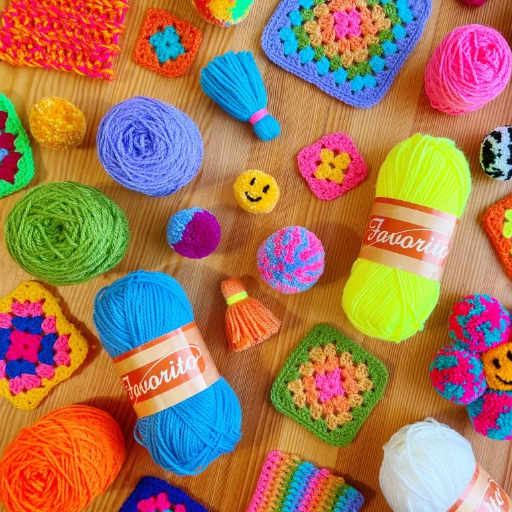
- Fiber Type
The fiber type will affect your final piece in texture, aging, and comfort. Virtually any natural fiber, such as cotton and wool, is better for soft and breathable garments; on the other hand, artificial fibers excel in hard and cheap products.
- Weight
Yarn weight determines how thick and stiff your item becomes and how well it drapes across surfaces. Lightweight yarns like fingering and sport make the best friends of delicate patterns, while a heavy rating suggested by the worsted name, or even heavier with the label of bulky, bid a great farewell to blankets, scarves, or winter wear.
- Hook Compatibility
Matching the yarn weight with the recommended hook size appears on the yarn label; this will ensure that your stitches form properly and that your finished piece is the actual size and tension wanted.
- Project Purpose
Think about the intended uses of the project. For babies or clothing, soft and washable yarns take priority. For decorative items, winning durability and structure are pre-requisites.
- Color and Dye Lot
Color consistency takes on very crucial importance in the case of bigger undertakings. So, never buy insufficient skeins from a different dye lot for fear of having a color mismatch.
With all this in mind, you can now look confidently at the yarn best suited for your crochet endeavor.
Project Suitability: When to Use Acrylic or Cotton
Each has its specific-purpose property, giving acrylics and cotton yarns a suitability for particular projects, depending on what is expected in durability, comfort, and utility. Acrylic yarn comes with the marked advantage of being inexpensive and easy to care for. One typically uses it to knit items that require much wear and washing, such as blankets, domestic decor, and outerwear. There is almost every possibility that an acrylic yarn will have a myriad of colors and textures to complement the more playful designs.
Each has its specific-purpose property, giving acrylics and cotton yarns a suitability for particular projects, depending on what is expected in durability, comfort, and utility. Acrylic yarn comes with the marked advantage of being inexpensive and easy to care for. One typically uses it to knit items that require much wear and washing, such as blankets, domestic decor, and outerwear. There is almost every possibility that an acrylic yarn will have a myriad of colors and textures to complement the more playful designs.
Environmental Impact: Sustainability Considerations
Both acrylic and cotton bring in an environmental footprint to yarn production; however, the issues they face are quite different. The long-term environmental impact of acrylic yarn is a serious concern because it is non-biodegradable and contributes to microplastic pollution when manufactured and washed, with the bulk of it being derived from petrochemicals. Further addition to this is the very high energy consumption involved in the production of synthetic fibers, which only increases their carbon emissions.
In any case, cotton yarn has some environmental drawbacks. The conventional cotton cultivation method requires irrigation, sometimes flood irrigation that wastes water; pesticides; and fertilizers, all of which cause and/or aggravate soil degradation, water shortage, and contamination of local ecosystems. Organic cotton thus becomes a sustainable alternative, as it contains no chemicals and often involves water-saving irrigation.
Reference Sources
-
Acrylic Yarn vs Cotton: Which is Best for Your Crochet Project? Acrylic yarn is lightweight, durable, and cost-effective, making it ideal for beginners and large projects. It retains color well and is easy to maintain but lacks breathability and moisture absorption. Cotton yarn, on the other hand, is soft, breathable, and moisture-absorbent, making it suitable for summer wear and sensitive skin.
-
Fiber Analysis/Comparative Fabric Study De-knitted cotton yarn, which is crimped to mimic wool, shows improved thermal insulation and moisture management compared to regular cotton. It is a viable alternative to wool for winter wear. Acrylic yarn, while durable, lacks the breathability and thermal properties of cotton.
-
Acrylic Vs Cotton Yarn – What’s The Difference? Acrylic yarn is praised for its affordability, durability, and vibrant color options, making it suitable for machine-washable items like blankets. However, it is less breathable and can trap water. Cotton yarn is breathable, absorbent, and durable, ideal for garments and summer wear, but it can shrink and wrinkle.
Frequently Asked Questions (FAQs)
Q: Comparing Acrylic and Cotton: Which Is Better for Different Projects?
A: When comparing acrylic and cotton yarn, it’s important to consider the specific needs of your project. Acrylic yarn is often favored for its durability and affordability, making it ideal for beginners or large projects like blankets. On the other hand, cotton yarn is better for items that require breathability, such as summer garments or dishcloths. If you’re working on a granny square or an amigurumi project, you might find that cotton’s ability to hold its shape better is advantageous. Ultimately, the best yarn for your project will depend on its intended use and your personal preferences.
Q: Cotton vs Acrylic: Which to Use for Knitting and Crochet?
A: The choice between cotton vs acrylic yarn often comes down to the technique you’re using. For knitting and crochet, acrylic yarn is often easier to work with due to its elasticity, which can help in maintaining stitch definition. However, cotton yarn is also a great option, especially for intricate patterns where stitch clarity is essential. Using cotton yarn can give your finished product a lovely drape and softness, particularly in items like summer tops or lightweight scarves. It’s essential to evaluate the types of cotton yarn available, as some blends offer unique properties that might suit your project better.
Q: Cotton or Acrylic: What’s Best for Your Next Crochet Project?
A: Deciding between cotton or acrylic for your next crochet project can be challenging. If you’re looking for a yarn that’s easy to care for and machine washable, acrylic is often the way to go. However, if you want a more natural feel and breathability, pure cotton or a cotton blend yarn might be preferable. For projects like hats or sweaters, acrylic provides warmth without weight, while cotton yarn can be ideal for dishcloths or summer wear. Each has its benefits, so consider the final use of your project when making your choice.
Q: Different Types of Yarn: Acrylic vs Cotton and Their Characteristics
A: When exploring different types of yarn, understanding the characteristics of acrylic vs cotton is crucial. Acrylic yarn is made from synthetic fibers and is known for its vibrant colors and affordability, making it accessible for various projects. In contrast, cotton yarn is derived from the fibers of the cotton plant, offering a natural texture and breathability. Cotton yarn is also less elastic than acrylic, which can affect its drape and shape. Whether you choose cotton and acrylic yarns or a blend, knowing their properties can enhance your crafting experience.








